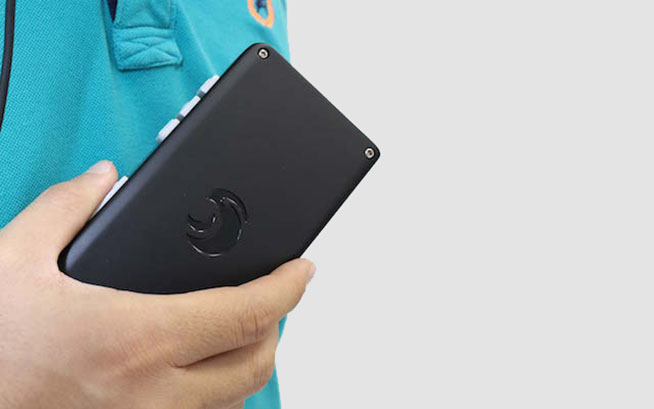The smart device transforms images into audio messages for the blind. The project bears the signature of two Italian guys
Good news is coming for all people affected by blindness. Eyra LTD, an Italian startup, has created a smart audio assistant that helps blind people to overcome the obstacles they encounter daily.
Horus, this is the name of the smart device, scans the surrounding environment and translates, for the person with visual impairment, images into verbal messages. In fact, the wearable can read the words written in a book, identify objects and, above all, is equipped with a facial recognition system. Two young Italians worked on the project, Saverio Murgia and Luca Nardelli, who today are respectively the general manager and the head of the technological area of the startup. I giovani hanno creato Horus pensando alle difficoltà che le persone colpite da cecità affrontano ogni giorno.
Come è composto
 Fonte foto: Horus
Fonte foto: Horus
Horus: come è fatto
Il dispositivo smart, che individua dei testi e delle immagini e poi li trasforma in parole e in segnali acustici per i non vedenti, è composto da due cuffie a forma di arco e a conduzione ossea, sulle quali sono riportate i pulsanti per il controllo audio, e da un piccolo computer a forma di smartphone che grazie alla sue dimensioni ridotte può essere trasportato con facilità. Il wearable monta due fotocamere che vengono usate da Horus per il riconoscimento facciale e per l’individuazione degli altri oggetti che circondano la persona affetta da disabilità visiva.
Interessante dare uno sguardo anche alle altre specifiche tecniche. Horus runs on the NVIDIA Tegra K1 processor, has an accelerated graphics processing unit (GPU) and also has other sensors that the wearable device uses to process and describe the images that come from the two cameras. The device has a battery life of up to 12 hours and can translate its surroundings into 3 languages: Italian, English and Japanese.
How to use Horus
Horus can help blind people in multiple situations. From reading a book to recognizing objects and people. In fact, the device is equipped with a 3D perception system that allows Horus to recognize an object from any angle. In addition, through sound messages, the wearable also indicates to people how to frame the object. As for the facial recognition, once you meet a new face Horus first warns the blind and then stores the face. The device is also useful for mobility. In this case, the wearable will guide the person to identify obstacles and their distance by emitting sound pulses that are sent to one of the two headsets based on the position where the object is located.
Price and release date
The version with English audio is expected to be launched on the market starting in January 2017 at a price of $2,000.
(The video in the opening is taken from YouTube)
Some of the videos in this section were taken from the internet, therefore rated in the public domain. If the subjects present in these videos or the authors had something against the publication, just make a request for removal by sending an email to: [email protected]. We will provide to the cancellation of the video in the shortest time possible.
